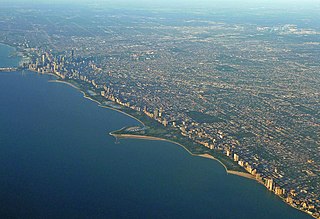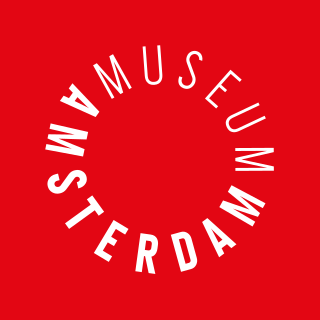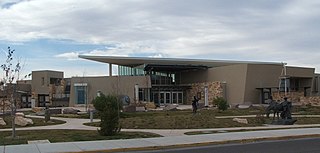
Lake Worth Beach, previously named Lake Worth, is a city in east-central Palm Beach County, Florida, United States, located about 64 miles (103 km) north of Miami. The city's name is derived from the body of water along its eastern border known as the Lake Worth Lagoon, which was named for General William J. Worth, who led United States Army forces during the last part of the Second Seminole War. Lake Worth Beach is situated south of West Palm Beach, southeast of Lake Clarke Shores, east of Palm Springs, and north of Lantana, while a small section of the city also partitions the town of Palm Beach. The 2010 census recorded a population of 34,910, which increased to 42,219 in the 2020 census. Lake Worth Beach is within the Miami metropolitan area, which was home to an estimated 6,138,333 people in 2020.

The Swiss Museum of Transport or Verkehrshaus der Schweiz in Lucerne opened in July 1959 and exhibits all forms of transport including trains, automobiles, ships and aircraft as well as communication technology. It is Switzerland's most popular museum. The museum also maintains a large collection of work by Hans Erni, a local painter and sculptor.

Lincoln Park is a 1,208-acre (489-hectare) park situated along Lake Michigan on the North Side of Chicago, Illinois. Named after US President Abraham Lincoln, it is the city's largest public park and stretches for seven miles (11 km) from Grand Avenue on the south to near Ardmore Avenue on the north, just north of the Lake Shore Drive terminus at Hollywood Avenue. Several museums and a zoo are located between North Avenue and Diversey Parkway in the eponymous neighborhood. Further to the north, the park is characterized by parkland, beaches, recreational areas, nature reserves, and harbors. To the south, there is a more narrow strip of beaches east of Lake Shore Drive, almost to downtown. With 20 million visitors per year, Lincoln Park is the second-most-visited city park in the United States, behind Central Park.

The Museum of History & Industry (MOHAI) is a history museum in the South Lake Union neighborhood of Seattle, Washington, United States. It is the largest private heritage organization in Washington state, maintaining a collection of nearly four million artifacts, photographs, and archival materials primarily focusing on Seattle and the greater Puget Sound region. A portion of this collection is on display in the museum's galleries at the historic Naval Reserve Armory in Lake Union Park.

The Francisco Villa Museum is dedicated to the life and times of the Mexican Revolutionary, Francisco "Pancho" Villa. The museum is in Chihuahua, Chihuahua, Mexico, and is housed in the former estate of General Francisco Villa and his widow, María Luz Corral de Villa.

The Arizona Historical Society (AHS) is a non-profit organization whose mission is to connect people through the power of Arizona's history. It does this through four regional divisions. Each division has a representative museum. The statewide divisions are as follows: Southern Arizona Division in Tucson, the Central Arizona Division in Tempe, the Northern Arizona Division in Flagstaff, and the Rio Colorado Division in Yuma. It was founded in 1884.

The Houses of Refuge in Florida were a series of stations operated by the United States Life Saving Service along the coast of Florida to rescue and shelter ship-wrecked sailors. Five houses were constructed on the east coast in 1876, with five more added in 1885 and 1886. There were also two life-saving stations built, one just south of the Jupiter Inlet, the other on the Gulf coast on Santa Rosa Island near Pensacola, Florida. A house of refuge was planned for the Marquesas Keys, but was never put into commission. The houses were manned by civilian contractors who lived in the houses with their families. Most of these houses remained in service as life-saving stations until 1915 or later. Some of the locations became United States Coast Guard stations after the Life-Saving Service was merged with the United States Revenue Cutter Service to form the Coast Guard in 1915.
The Leelanau Historical Society and Museum is located at 203 E Cedar Street in Leland, Michigan, on the banks of the Leland River and two blocks from historic Fishtown and Lake Michigan. The museum's exhibits reflect the cultural history of the Leelanau Peninsula and its islands from the time of first human habitation to later settlement and development. Exhibits pertain to Shipwrecks of the Manitou Passage, Fur Trading, Early Tourism & Recreation in the region. Another permanent exhibit displays traditional Anishinaabe black ash baskets and quillwork on birch bark, which are primarily the work of the Odawa artists. The museum also houses archives of local history and collections of objects that represent the diverse cultures of Leelanau, including Anishinaabe traditional arts. A free online archive, available to the public, for research covers over 14,000 Leelanau County artifacts, photographs, maps, documents, and artwork.

The Amsterdam Museum, until 2011 called the Amsterdams Historisch Museum, is a museum documenting the history of Amsterdam. Since 1975, it is located in the old city orphanage between Kalverstraat and Nieuwezijds Voorburgwal.

The Ayala Museum is a museum in Makati, Metro Manila, Philippines. It is located in Ayala Center adjacent to Greenbelt mall and is run privately by the Ayala Foundation. This six-storey edifice houses ethnographic and archaeological exhibits on Filipino culture, art, and history. Since its establishment in 1967, the museum has been committed to showcasing overseas collections and situating contemporary Philippine art in the global arena in a two-way highway of mutual cooperation and exchange with local and international associates. The museum was reopened on December 4, 2021 after a two-year renovation.

Varshavsky station, or Warsaw station, is a former passenger railway station in Saint Petersburg, Russia. It is located to the south of the city centre, and was in operation from 1853 to 2001 From 2001 to 2017 it served as the home of the Russian Railway Museum.

The Albuquerque Museum, formerly known as the Albuquerque Museum of Art and History, is a public art and history museum in Albuquerque, New Mexico. The museum is located in the Old Town area and is operated by the City of Albuquerque Department of Arts & Culture.

The U.S. Army Medical Department Museum — or AMEDD Museum — at Fort Sam Houston, San Antonio, Texas, originated as part of the Army's Field Service School at Carlisle Barracks, Pennsylvania. It moved to Fort Sam Houston in 1946. It is currently a component of the U.S. Army Medical Department Center and School.

HistoryMiami Museum, formerly known as the Historical Museum of Southern Florida, is a museum located in Downtown Miami, Florida, United States. HistoryMiami Museum is the largest history museum in the State of Florida. HistoryMiami houses four permanent galleries and up to three traveling exhibits, Archives and Research Center, the South Florida Folklife Center, the Education Center, and City Tours program. Each February, HistoryMiami also hosts the annual Miami International Map Fair, the largest map fair in the Western Hemisphere.

The Arizona Museum of Natural History is the only natural history museum in the greater Phoenix area and is located in Mesa, Arizona. It exhibits the natural and cultural history of the Southwestern United States.

Dresden City Museum is the central city museum for the German city of Dresden. Its displays tell the 800-year story of the city and is the largest and most important of the Dresden State Museums. Its art collections split off in 2000 to form the Dresden City Art Gallery, but both the Art Gallery and the Museum are housed in Dresden's Landhaus.

The Kentucky Coal Museum is heritage center located in Benham, Kentucky. Its focus is the history of the coal industry in Eastern Kentucky, featuring specific exhibits on the company towns of Benham and neighboring Lynch. It is housed in a former company store that was built by International Harvester in 1923. In June 1990, the Tri-City Chamber of Commerce purchased the building for the future site of the museum. After receiving additional grants from the state of Kentucky, the museum opened in May 1994.
Boone County Historical Society was established in 1924. Located in Columbia, Missouri, United States, the Boone County Historical Museum has been collecting, preserving and exhibiting artifacts and records of the people of Boone County, Missouri.

The Boca Raton Historical Society & Museum is a non-profit organization and public museum dedicated to preserve and collect history and artifacts of Boca Raton, Florida, United States, for educational and advocacy purposes. The society is known for their goal of historic designation and restoring historical structures important to the history of Boca Raton. The society offers exhibits, lectures, lessons, history tours, and educational programs to achieve their goal. Many interactive educational programs and services of the society are provided to schools, teachers, and children to help educate Florida's history. Additionally, the community provides a library of collected and preserved artifacts, photographs, newspapers, diaries, reference books, and research papers documented for educational and research purposes. The historical society has been a contributor of researching local history of Florida and Boca Raton and offers scholars, educators, university graduates and interns access to their research collection and publications, such as the Spanish Papers. The Boca Raton Historical Museum is publicly open from Monday through Friday from 10am to 4pm.



















